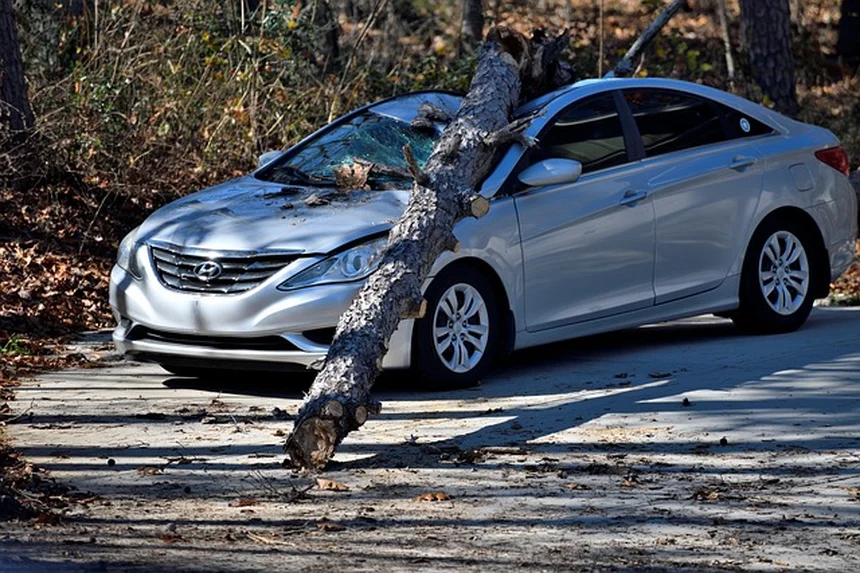Does Car Insurance Cover the Car or the Driver? Find Out the Truth!
- Apr 18,2025
So, does car insurance cover the car or the driver? The answer is: car insurance primarily covers the car itself, but there are nuances you need to be aware of. When you're navigating the world of auto insurance, it's essential to understand how coverage works, especially when it comes to who’s behind the wheel. For instance, your personal policy typically protects your vehicle in case of damage, but if someone else is driving your car and gets into an accident, things can get a bit complicated. You might find yourself asking, What happens if my friend crashes my car? or Am I covered if I borrow someone else's vehicle? I’m here to break that down for you, ensuring you know exactly what to expect from your coverage without any gray areas. Let’s dive in and explore how car insurance really works, so you can make informed decisions and drive with confidence! 🚗💨
E.g. :Wyoming Car Insurance: 7 Essential Tips to Save Money and Stay Protected
- 1、🚗 Car Insurance 101: Does It Cover the Car or the Driver?
- 2、👥 The Named Driver Dilemma
- 3、🔄 When Insurance Plays Musical Chairs
- 4、🌎 State-by-State Surprises
- 5、🔮 Future-Proofing Your Policy
- 6、🤔 Your Burning Questions Answered
- 7、FAQs
🚗 Car Insurance 101: Does It Cover the Car or the Driver?
🔍 The Million-Dollar Question
Ever wondered why your insurance agent gets nervous when you ask, "Does my policy cover my cousin borrowing my pickup truck for a cross-country move?" Here's the deal - car insurance primarily follows the vehicle, but there are more twists than a season finale of your favorite drama show. Let me break it down for you with some real-world examples.
Imagine this: Your 2018 Honda Accord gets totaled in a hailstorm. Your comprehensive coverage pays out because the policy is tied to that specific vehicle. But when your best friend rear-ends someone while borrowing your car? That's where things get interesting - your liability coverage typically handles it, but their driving record could affect your rates. See the pattern? The car's usually the star of the insurance show, but the driver can steal the spotlight in certain situations.
📊 Coverage Type Breakdown
| Coverage Type | Protects Your Car | Protects Other Drivers | Follows the Driver |
|---|---|---|---|
| Liability | ❌ No | ✅ Yes | Sometimes |
| Collision | ✅ Yes | ❌ No | ❌ No |
| Comprehensive | ✅ Yes | ❌ No | ❌ No |
| Medical Payments | ❌ No | ✅ Yes (for passengers) | ✅ Yes |
Notice something interesting? While liability coverage can sometimes follow the driver (like when borrowing cars), physical damage coverages are married to your vehicle's VIN number. This explains why your rates change when you switch cars, even if your driving record stays perfect.
👥 The Named Driver Dilemma
 Photos provided by pixabay
Photos provided by pixabay
🏷️ What's in a Name?
Here's a fun fact that might save you thousands: Insurance companies care way more about who's regularly driving your car than you might think. When my neighbor added his 16-year-old to the policy, his premium doubled overnight. Why? Because insurers price policies based on risk factors tied to specific drivers listed on the policy.
But here's where it gets tricky - most policies include something called "permissive use" for occasional drivers. That means when your college roommate borrows your car twice a year, they're probably covered. But if they're driving it every Tuesday to their part-time job? That's when you need to add them as a named driver or risk claim denials.
🚨 The Exclusion Exception
Did you know some policies actually name excluded drivers? That's right - you can specifically tell your insurer, "Under no circumstances should we cover my brother who's had three DUIs." If he wrecks your car anyway? You're personally on the hook for all damages. Talk about family drama!
Here's a pro tip: Always review your policy's driver section annually. Life changes like new licensed teens, elderly parents moving in, or even a live-in partner can affect your coverage in ways you might not expect.
🔄 When Insurance Plays Musical Chairs
🚘 Borrowing Cars: Whose Insurance Pays?
Picture this: You're on vacation and rent a car. Smash! A shopping cart dings the door. Now what? Here's the surprising truth - your personal auto policy often extends to rental cars, but with limitations. Most cover the same liability limits as your regular policy, but may cap physical damage coverage.
But wait - isn't this article about whether insurance follows the car or driver? Exactly! This rental car scenario proves that certain coverages can temporarily transfer when you're behind the wheel of a different vehicle. The same principle applies when you occasionally drive a friend's car - your liability coverage might serve as secondary protection after the car owner's policy pays out.
 Photos provided by pixabay
Photos provided by pixabay
🏷️ What's in a Name?
Here's a question that stumps many people: "What if I'm delivering food with my personal car - am I still covered?" The answer might shock you. Most personal auto policies exclude commercial use, meaning you'd need rideshare or business coverage. That $20 pizza delivery could cost you thousands if you're in an accident without proper protection.
This distinction matters because it shows how insurers care about how the car is being used, not just who's driving it. Whether you're commuting to work or running business errands can make all the difference when filing a claim.
🌎 State-by-State Surprises
🗺️ The Legal Landscape
Did you know that in some states, insurance follows the car so strictly that the owner's policy always pays first, regardless of who's driving? Meanwhile, other states have more nuanced approaches. For example, in Texas, the driver's insurance might kick in if the car owner's limits are exhausted.
This variation explains why your cousin in Florida pays different rates than you do in Michigan for the same coverage. State laws dictate minimum requirements and claims processes, creating a patchwork of regulations that would confuse even the most detail-oriented driver.
💰 The Financial Fallout
Let's talk numbers for a second. In no-fault states like Florida, your own insurance pays your medical bills regardless of who caused the accident. But in tort states, you can sue the at-fault driver. This fundamental difference affects how insurers calculate risk and price policies.
Here's a concrete example: If you lend your car to someone in a no-fault state and they cause an accident, your insurance handles your vehicle's damage while their injuries fall under the no-fault system. Confusing? Absolutely. That's why understanding your state's specific rules is crucial for making smart coverage decisions.
🔮 Future-Proofing Your Policy
 Photos provided by pixabay
Photos provided by pixabay
🏷️ What's in a Name?
After reading all this, you might be wondering: "How do I make sure I'm actually covered in real-life situations?" The answer lies in becoming best friends with your policy's declarations page. This document spells out exactly who and what your insurance protects.
For instance, some policies exclude certain types of vehicles (like high-performance cars) or require special endorsements for business use. Others might limit coverage for drivers under 25. These details make all the difference when you need to file a claim, so don't wait until an accident happens to discover your coverage gaps.
🛡️ Customizing Your Coverage
The beautiful (and sometimes frustrating) thing about car insurance is that it's not one-size-fits-all. You can add endorsements like:
- Rental reimbursement (for when your car's in the shop)
- Gap coverage (if you owe more than your car's worth)
- Roadside assistance (for those unexpected breakdowns)
Each addition tailors your policy to better match your actual needs and driving habits. Remember - the goal isn't just to meet state minimums, but to protect your financial future from the unpredictable costs of accidents and vehicle damage.
🤔 Your Burning Questions Answered
❓ "If my friend wrecks my car, does their insurance pay?"
Great question! Here's the breakdown: In most cases, your insurance pays first because the policy follows the car. However, if damages exceed your limits, your friend's policy might serve as secondary coverage. This is why it's crucial to carry adequate liability limits - you never know when an accident might involve expensive medical bills or luxury vehicles.
❓ "Can I drive any car with my insurance?"
Not exactly. While your liability coverage might extend to occasional driving of other vehicles, there are important limitations. The car must be legally registered, not excluded from coverage, and you typically can't use it for business purposes. Also, your policy's limits and deductibles still apply - you're not magically covered by someone else's better insurance just because you're driving their car.
The bottom line? Car insurance is like a tailored suit - it fits your specific situation best. While it can stretch to cover some unusual circumstances, there are limits to its flexibility. Understanding these boundaries helps you make smarter decisions about who drives your car and when.
Wrapping it all up, we've explored the intricate world of auto insurance and how it primarily covers the car rather than the driver. Remember, when you ask, "Does car insurance cover the car or the driver?", the answer leans heavily towards the vehicle itself. However, there are exceptions, especially when it comes to liability coverage, which can sometimes follow the driver. With real-life examples, we’ve seen how your coverage can change based on who is behind the wheel and what they’re doing with your car. It’s important to consider factors like named drivers, permissive use, and even state laws that can significantly impact your insurance claims and costs.
As you think about your own insurance policy, I encourage you to review its details regularly. Make sure to understand how different coverages work, especially when it comes to borrowing cars or using your vehicle for commercial purposes. By taking these steps, you can better protect yourself and ensure that you’re prepared for any situation. Let’s keep the conversation going! Share your thoughts or questions in the comments below, and don’t forget to follow us on social media for more tips to navigate your car insurance journey. 🚗💬
E.g. :Does Car Insurance Cover the Car or Driver? | Progressive
FAQs
❓ What does car insurance primarily cover: the car or the driver?
Car insurance primarily follows the vehicle, meaning your policy is tied to your specific car. For instance, if your friend borrows your car and gets into an accident, your liability coverage will usually handle the damages. However, the driver’s record can impact your rates, so it’s essential to consider who is driving your car. Remember, while the car is the main focus, the driver can influence the situation in certain scenarios.
❓ What happens if I lend my car to a friend and they get into an accident?
If your friend wrecks your car, typically your insurance will pay first since the policy follows the car. If the damages exceed your coverage limits, your friend's insurance may kick in as secondary coverage. This situation highlights the importance of having adequate liability limits to avoid costly out-of-pocket expenses, especially if medical bills or repairs are high.
❓ Can I drive someone else's car with my insurance?
Yes, but there are some conditions. Your liability coverage may extend to driving another person's vehicle occasionally, but the car must be legally registered and not excluded from coverage. It's also important to know that you can't use it for business purposes. Your policy's limits and deductibles will still apply, so understanding the specifics of your coverage is crucial to avoid surprises.
❓ How can I ensure I have the right coverage when friends borrow my car?
The best way to ensure proper coverage is to review your policy's declarations page regularly. This document outlines who and what is covered under your insurance. If you add frequent drivers, consider listing them on your policy to avoid claim denials. Regularly updating your policy to reflect changes in your life, like new drivers or vehicles, is key to maintaining adequate coverage.
❓ What should I know about state laws affecting car insurance coverage?
State laws can significantly influence how insurance coverage works. In some states, the owner's policy pays first, regardless of who is driving, while in others, the driver’s insurance may come into play if needed. Understanding your state's regulations is crucial for making informed decisions about your coverage and can help you avoid unexpected financial consequences.
